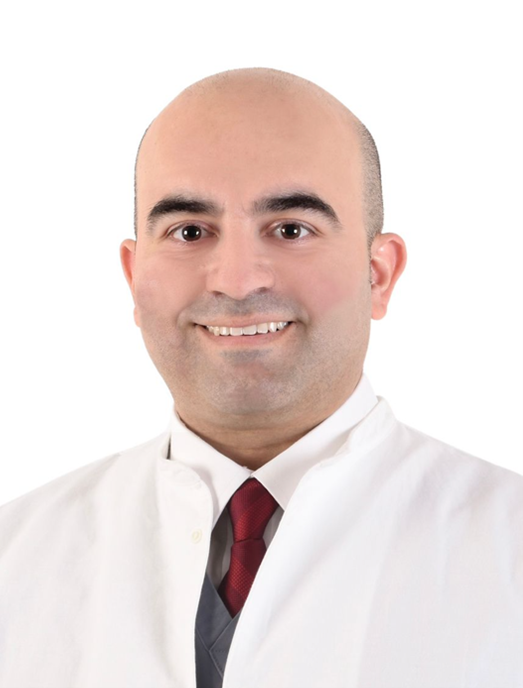Advancements in Prosthodontics: Exploring Innovations in Rehabilitation Medicine
A special issue of Prosthesis (ISSN 2673-1592). This special issue belongs to the section "Prosthodontics".
Deadline for manuscript submissions: closed (12 December 2024) | Viewed by 44046
Special Issue Editor
2. Department of Reconstructive Dentistry and Gerodontology, School of Dental Medicine, University of Bern, Bern, Switzerland
Interests: reconstructive dentistry; prosthetic dentistry; aesthetic dentistry; cosmetic dentistry; laminate veneers; implant dentistry; digital dentistry; implant surgery; evidence-based dentistry; medical education
Special Issues, Collections and Topics in MDPI journals
Special Issue Information
Dear Colleagues,
Prosthesis, an international peer-reviewed journal dedicated to rehabilitation medicine, is pleased to announce a new Special Issue focused on "Advancements in Prosthodontics: Exploring Innovations in Rehabilitation Medicine". This Special Issue aims to provide an interdisciplinary platform for researchers, clinicians, and experts in the field of prosthodontics to showcase cutting-edge advancements, novel techniques, and innovative approaches in dental prosthesis design and application. We invite original research articles, comprehensive reviews, insightful communications, and impactful case reports that delve into the latest developments within prosthodontics, ranging from materials science and engineering to precision dental restoration techniques.
Prosthodontics is pivotal in restoring oral function and esthetics for patients with missing or damaged teeth, making it an integral component of rehabilitation medicine. This Special Issue seeks to highlight diverse aspects of prosthodontic interventions, including but not limited to implant-supported prostheses, digital dentistry, CAD/CAM technology, removable partial dentures, and advances in dental materials. Researchers are encouraged to present their experimental and theoretical findings meticulously, allowing for reproducibility and broad dissemination of knowledge.
Join us in this Special Issue as we collectively advance the field of prosthodontics, contribute to evidence-based practices, and foster collaboration among experts to optimize patient care and enhance the quality of life for individuals requiring dental rehabilitation.
Dr. Kelvin Ian Afrashtehfar
Guest Editor
Manuscript Submission Information
Manuscripts should be submitted online at www.mdpi.com by registering and logging in to this website. Once you are registered, click here to go to the submission form. Manuscripts can be submitted until the deadline. All submissions that pass pre-check are peer-reviewed. Accepted papers will be published continuously in the journal (as soon as accepted) and will be listed together on the special issue website. Research articles, review articles as well as short communications are invited. For planned papers, a title and short abstract (about 100 words) can be sent to the Editorial Office for announcement on this website.
Submitted manuscripts should not have been published previously, nor be under consideration for publication elsewhere (except conference proceedings papers). All manuscripts are thoroughly refereed through a single-blind peer-review process. A guide for authors and other relevant information for submission of manuscripts is available on the Instructions for Authors page. Prosthesis is an international peer-reviewed open access semimonthly journal published by MDPI.
Please visit the Instructions for Authors page before submitting a manuscript. The Article Processing Charge (APC) for publication in this open access journal is 1600 CHF (Swiss Francs). Submitted papers should be well formatted and use good English. Authors may use MDPI's English editing service prior to publication or during author revisions.
Keywords
- prosthodontics
- dental prosthesis
- dental implants
- digital dentistry
- CAD/CAM technology
- dental materials
- rehabilitation medicine
- precision dental restoration
- oral function
- esthetics
- immediate loading implants
- computer-guided surgery
- removable partial dentures
- dental implant surfaces
- biomechanical analysis
- 3D printing
- artificial intelligence
- oral-health-related quality of life
- prosthetic dentistry
- restorative dentistry
- reconstructive dentistry
- aesthetic dentistry
- oral implantology
Benefits of Publishing in a Special Issue
- Ease of navigation: Grouping papers by topic helps scholars navigate broad scope journals more efficiently.
- Greater discoverability: Special Issues support the reach and impact of scientific research. Articles in Special Issues are more discoverable and cited more frequently.
- Expansion of research network: Special Issues facilitate connections among authors, fostering scientific collaborations.
- External promotion: Articles in Special Issues are often promoted through the journal's social media, increasing their visibility.
- Reprint: MDPI Books provides the opportunity to republish successful Special Issues in book format, both online and in print.
Further information on MDPI's Special Issue policies can be found here.






